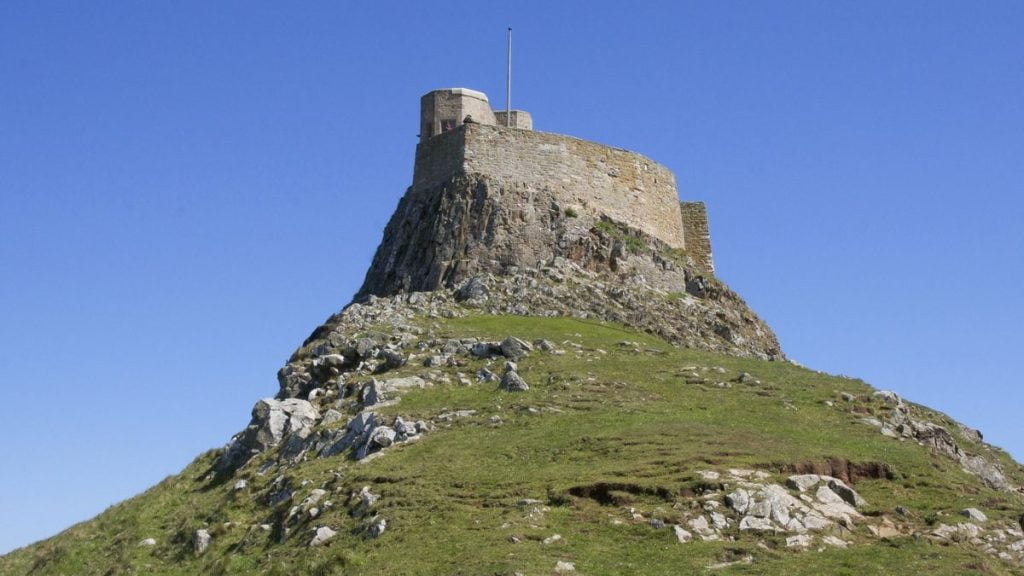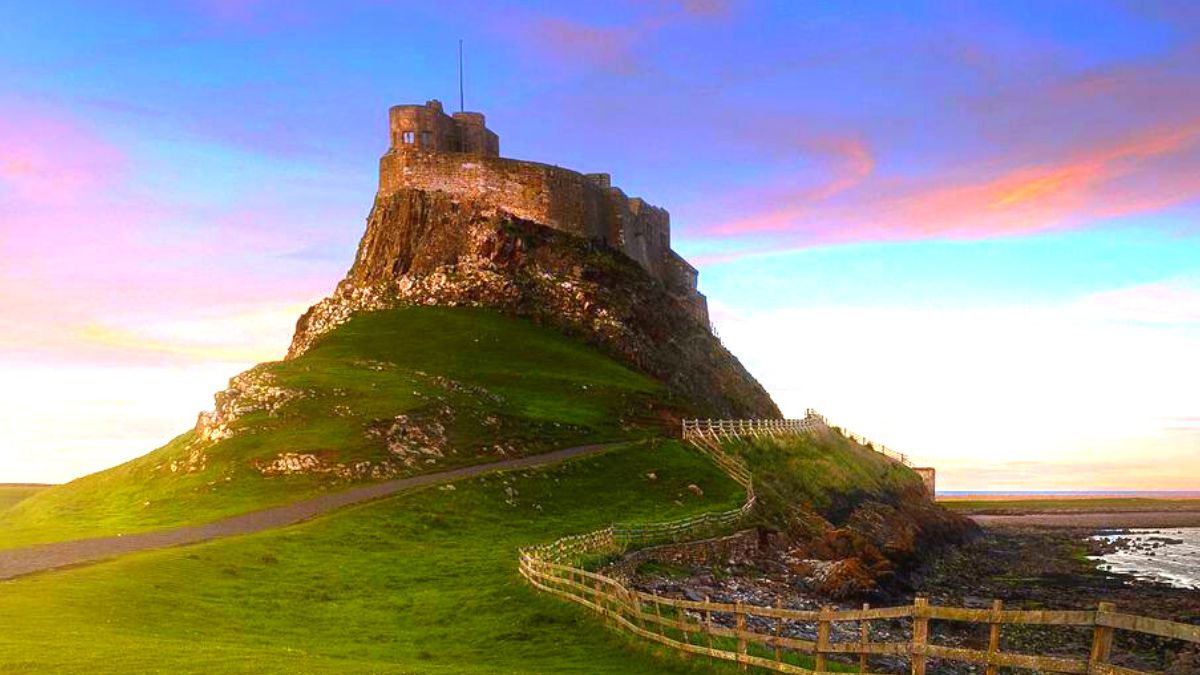Sure, but you’ll need to put some thought into it (which is half the fun). Crossing the causeway to Holy Island and exploring the Island are both fantastic experiences. The Castle is accessible beginning in the middle of February and running until the last week of October or the first week of November (exact dates vary, but the Castle is closed for winter). Tides determine opening and closing hours each day. Organize your trip by: Before heading to Holy Island, be sure the tides will allow you to get there (see our article on how to cross the causeway). Give yourself plenty of time to reach the Island and depart before the following tide.

An alternate and highly recommended alternative is to spend the night (or at least a tide) on the Island. There’s nothing quite like the schadenfreude you’ll feel when the tide drives all the other visitors off Holy Island, and you get to experience the Island like a true resident. Then you should visit the website of Lindisfarne Castle to learn when it is open. The Castle is open when the Island is, but you should also give yourself time to see the Island’s charming settlement and harbor, historic priory, and stunning beaches. The Castle welcomes visitors up until 30 minutes before closing time. Even if you’re a member of the NT, you’ll still need to schedule a specific admission time in advance. If you haven’t but still want to give it a go, you’ll have the greatest luck seeing if there are any openings towards the day’s conclusion.
One of the most photographed structures in England, Lindisfarne Castle, seems to have grown out of a cliff face of basalt. Lindisfarne is a Tudor fort that was sympathetically restored in the 20th century to seem like it was built in the Middle Ages. To fully grasp the Castle, one must first get familiar with Holy Island’s past. This is a tidal island that is connected to the mainland by a lengthy causeway that is only passable at low tide. St. Cuthbert founded a monastery there in the seventh century, and it grew to become a major intellectual hub.
The monks of Lindisfarne fled the Vikings with the shrine of St. Cuthbert after a series of invasions. The cathedral re-established a monastic presence in the shape of Lindisfarne Priory, home to the Benedictine order, following the Norman Conquest, which is when the saint arrived. Lindisfarne Priory was never a prosperous monastery, and in the 14th century, border attacks by the Scots made things much more difficult for the monks there. Henry VIII’s commissioners razed the monastery to the ground in an effort to eliminate any remaining monastic influence in England during the Reformation.
On Lindisfarne, Henry did not only destroy the priory and then abandoned the Island. After the priory was closed, King John had a fort constructed on top of Beblowe, a prominent outcrop of rock to the north of the monastic structures that overlooked the harbor. Perhaps before Henry built it, a tiny lookout tower stood there. The strategic positioning looks ideal for harbor protection. An earthen bulwark served as the foundation for the fort, and it wasn’t until the reign of Elizabeth I that the fort’s defenses were upgraded to stone using remnants from the priory’s destruction. These events occurred between 1565 and 1571.
More on Animesonnet.com: Pembroke Castle, here
You could read about Henry VIII having constructed Lindisfarne Castle and see it as one of his geometric forts dotting the southern coast. However, unlike Henry’s other coastal fortifications, Lindisfarne is clearly of Elizabethan rather than early Tudor construction. Due to the size and shape of the rock on which the Castle was built, the Elizabethan architects and engineers were forced to create a compact yet strong fortification. Two separate courts are formed by gun batteries carved into the rock face and a garrison block in between them. The High Battery was the westernmost and highest point, where guns were pointed through the parapets of the battlements.

Despite (or maybe because of) its intimidating look, Lindisfarne Castle was only ever the scene of a single battle, which occurred in 1715 when it was captured by loyalists to James Stuart, the Old Pretender. However, the Jacobean Rising was doomed from the start, and Stuart loyalists quickly capitulated to government troops. For years the Castle lay dormant, and if not for the efforts of one man, it may have been forgotten by history. By turning the garrison quarters into a residence and the Tudor basements into a cozy suite of living rooms, Arts and Crafts architect Sir Edwin Lutyens transformed the Elizabethan fort into a mock castle for Edward Hudson, creator of Country Life magazine, in 1902–1903. Hudson sought a tranquil home outside of the city.
The end product is unique, almost surreal, and fantastic beyond compare to any English castle. Even though the building dates back to the 1600s and has some authentic 16th-century vaulting, many of the interior details give the impression of being authentic but are really sympathetic mock-Tudor designs inserted by Lutyens. You can tell it’s Tudor because it has a fireplace, wood paneling, latched doors, brick floors, and molded ceiling beams, all designed to seem authentic.
This current structure is merely a small fraction of Hudson’s original vision for the property. He planned on constructing a large gatehouse and water garden but never got around to doing so. As a private house, the Castle served its last owner for just around 70 years before being donated to the United States. The National Trust is responsible for its upkeep presently. One of the most photographed aspects of the Castle is a row of upended boats that have been transformed into houses. There are typically lines of people waiting to snap photos of the boats during peak seasons.
From personal experience, I can attest that the modest walled garden built by Gertrude Jekyll at the foot of the cliff on which the Castle rests is a delightful place to escape the heat of July. Jekyll converted what had been a vegetable garden for the fort’s garrison into a charming, albeit compact, landscape. The National Trust meticulously recreated Jekyll’s original design and planting program.


Wasn’t the Holy Island where the Venerable Bede lived? Thanks for sharing this beautiful castle!